So many great minds, philosophers, and wanderers have come and gone. And no doubt so many more will follow in a quest to truly understand the yet simple and mysterious fact that from where the universe came from? And where the universe will go…..!!! Well, there could be so many synonyms for the universe. But in the world of philosophy and physics – COSMOS is the abstract one.
Tychonic System (16th Century AD)
I know you would be thinking that I just took a big quantum leap from the 20th century to the 16th century; directly landing on the works of Tycho Brahe. Well, there were so many different cosmological theories about the universe starting from the Einsteinian universe to the Newtonian model to the Kepler model until the Copernican model (maybe some more between them). Let me tell you why I skipped all of these from my list of top 6 obsolete cosmological theories of the universe.
Well fundamentally, there can only be two types of cosmological theories of the universe. Meaning either we are living in a flat universe or in a curve universe (circular or elliptical, etc). The currently accepted cosmological model of the universe is solely based on the curved-shaped universe.
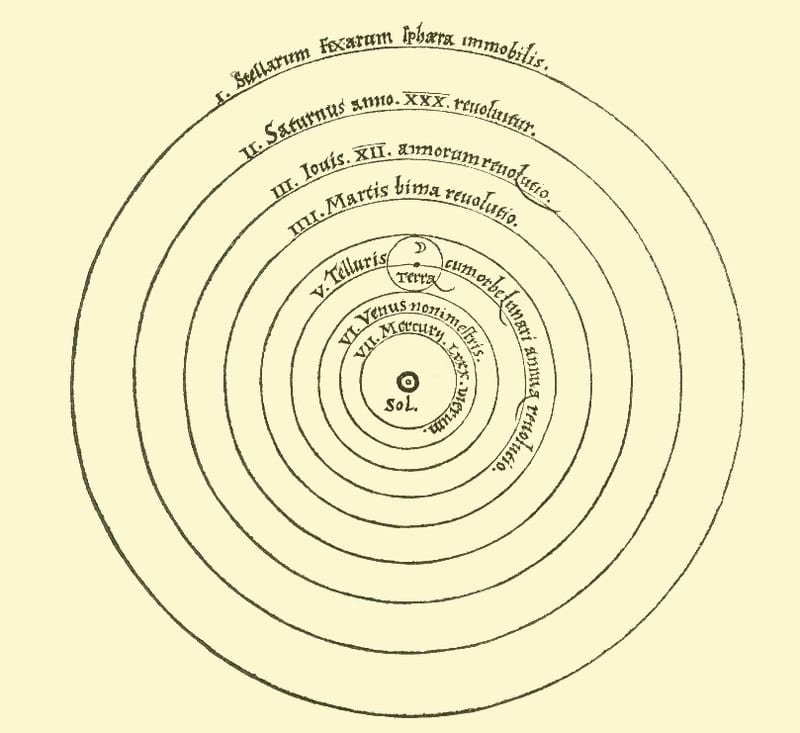
Let me explain to you how by just simply giving you some facts. The LAMBDA-CDM model is based on Bang bang theory. The big bang theory of the universe is itself a byproduct of Einstein’s field equations of the Einsteinian universe. In the same way, the Einsteinian universe is dependent on the Newtonian universe. And all the above-mentioned cosmological theories started with the Copernican revolution.
So, now I hope you know why I skipped all the cosmological theories of the universe between the 20th century to the 16th century.
Coming back to the Tychonic model; established by a danish astronomer Tycho Brahe; is one of the obsolete cosmological theories of the universe hypothesizes that the earth is the center of the universe. On the other hand, the sun, moon, and all the stars revolve around the earth; And the other planets within our solar system revolve around the sun.
In other words, the Tychonic system basically combined the mathematical benefits or modern concepts of the Copernican system (heliocentrism) with the philosophical benefits of the Aristotelean-Ptolemaic system (Geocentrism). That’s why the Brahe model of the universe is also referred to as the geo-helio-centric model. Meaning it provided a conceptual bridge between geocentrism and heliocentrism.
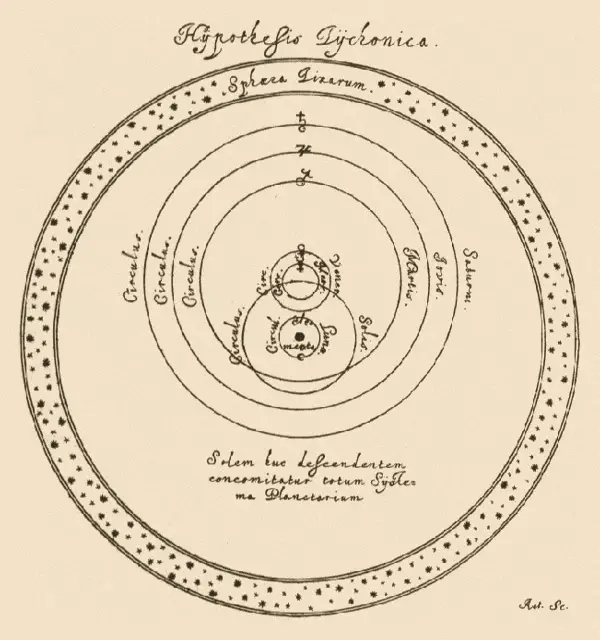
Because in the view of Tycho Brahe himself, he neither violated the laws of physics (mathematical view) nor the sacred scriptures (philosophical view). If you want to gain more insight into the Tychonic system, you can view this article. In fact, almost a century before the Brahe model of the universe, an Indian astronomer Nilakantha Somayaji proposed a similar geo-helio-centric model of the universe. In Nilakantha Cosmological theory, all the planets (Mercury, Venus, Mars, Jupiter, and Saturn) revolves around the sun except the immobile earth.
After the death of Tycho Brahe, his assistant Johannes Kepler used his observation and fused it with the Copernican Model; and derived his Kepler’s Law Of Planetary Motion.
Aryabhatan Model Of The Universe (5th Century AD)
The next one in the line of my Top 6 Obsolete cosmological theories of the universe is the Aryabhatan model of the universe. Well, if I talk about Tycho Brahe, he was quite sure that his cosmological theory was solely based on the geo-helio-centric model. On the other hand, Aryabhata – father of the Aryabhatan model of the universe was in a bit of confusion in his thought process.
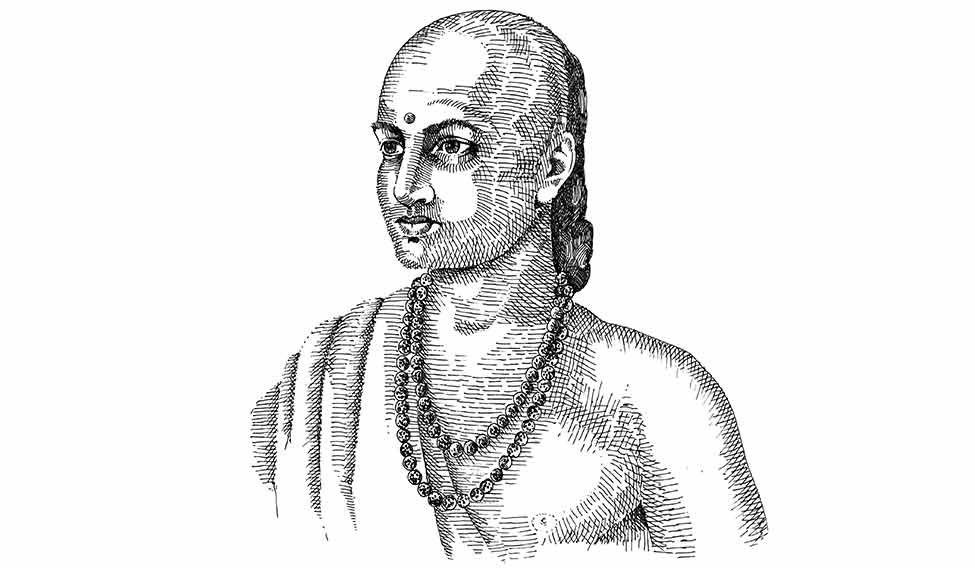
I mean to say that he was not completely sure about the fact that whether all the planets revolve around the earth or the sun. On the contrary, he was quite sure that the earth revolves on its axis making day and night on earth. He simply discarded the notion that the planet earth is “ACHALA” i.e immovable.
Therefore, from his works, it was concluded that he advocated both. In fact, some historians suggest that maybe because most of his works based on the cosmological model of the universe was lost. That’s why we think that he was in a bit of confusion. Meaning he is regarded as one of the most influential mathematicians and astronomers of Ancient India.

Well if I talk about his other works: the concept of Mathematical digit “ZERO” was given by Aryabhata. In his book Aryabhatia, he explained ZERO as he writes, “sthānāt sthānaṁ daśaguṇaṁ syāt” meaning from place to place, each is ten times the preceding.
On the other hand, he also calculated the numerical value of Pi (π) up to 4 decimal places. And declared it as an irrational number long before the swiss polymath Johann Heinrich Lambert – who explained the concept of Pi (π) in 1761. If you want to know more about the Great Scientist And Critical Thinkers From Ancient India, you can view this article.
Aristotelian Universe (4th Century BC)
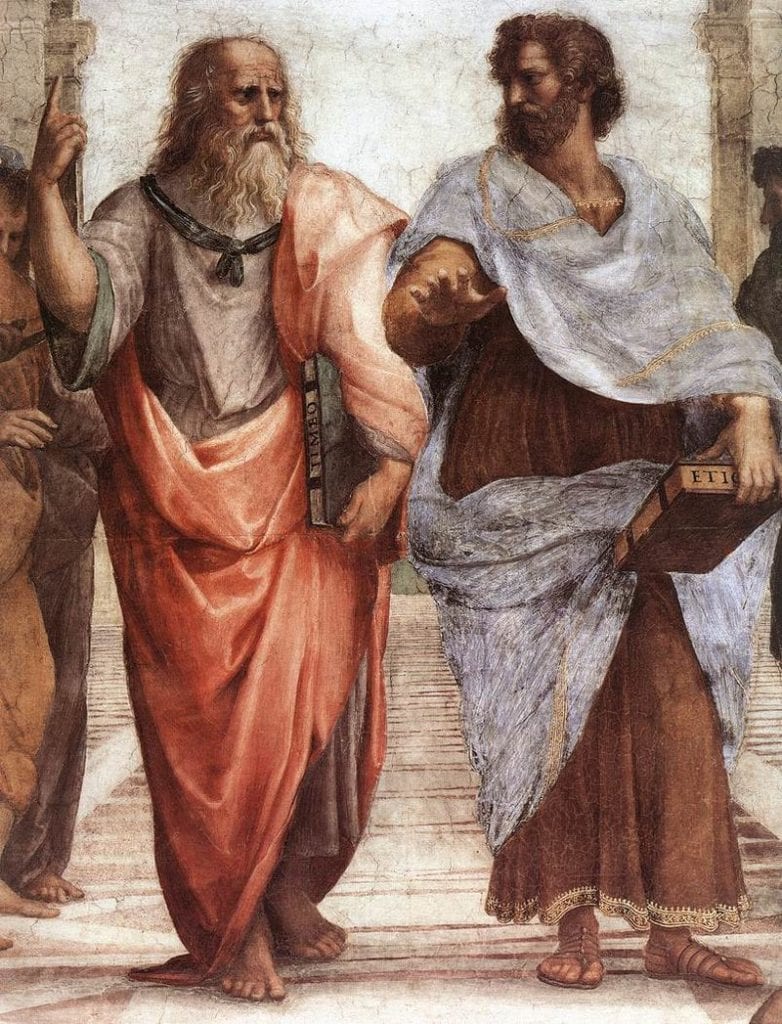
The next one in the line of my Top 6 obsolete cosmological theories of the universe is the Aristotelian universe. In Aristotle’s model of the universe, the earth is the center of the universe, and all the stars, planets, sun, and all heavenly bodies revolve around the earth.
Take a look at Geocentrism vs Heliocentrism in Tabular Form
In Aristotelian philosophy, everything was made up of Five fundamental classical elements i.e earth, water, air, fire, and aether.
Well, to define his cosmological model of the universe, Aristotle divided his universe into two distinct spheres i.e terrestrial sphere and the celestial sphere. The terrestrial sphere lies below the sphere of the moon and the celestial sphere lies above the sphere of the moon.
Terrestrial Sphere
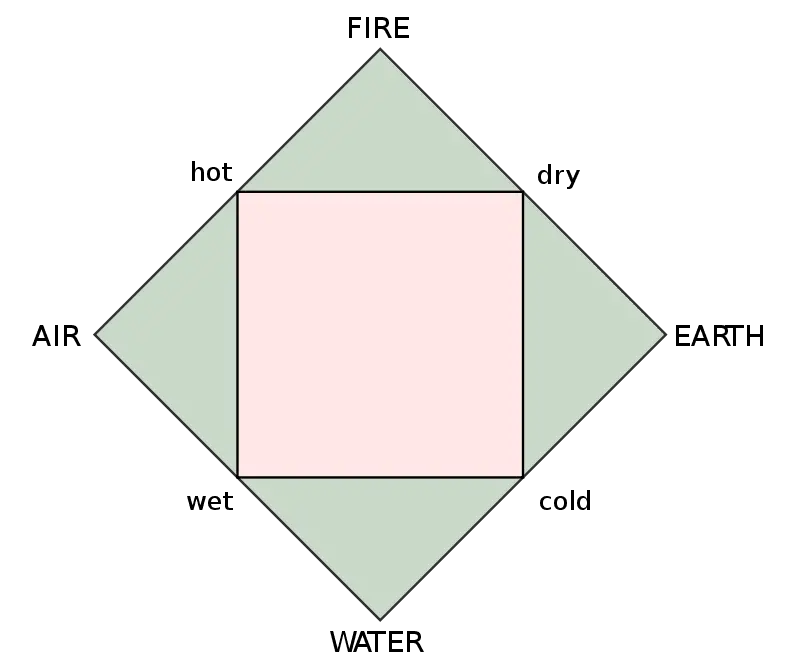
Aristotle believed that the terrestrial sphere is primarily made up of Earth, water, air, and fire. In the Aristotelian view, the four classical elements of the terrestrial sphere are corruptable. Meaning they can change or transform into one another; not to forget there are some rules of the transformation. Meaning they can only transform into elements they share a property. And moreover that, according to Aristotelian philosophy; only in the terrestrial sphere; humans can live and evolve.
Celestial Sphere
Now, if I talk about the celestial sphere, in Aristotle’s model of the universe, the celestial sphere was solely composed of Aether only. The existence of the Aether or so-called fifth being was rejected by the evidence shown in the Michelson-Morley experiment and Albert Einstein himself.
In Aristotelian view – the celestial spheres or heavenly spheres were made up of a weightless and incorruptible element i.e Aether which sadly does not exists on earth or terrestrial sphere. Aristotle believed that, above the sphere of the moon, there was no change except the circular movement and everything was eternal there. Obviously, that’s why it was called heaven.
Conclusion
Now, I can conclude from Aristotle’s model of the universe that the earth or terrestrial sphere was made up of heavy and corruptable elements i.e earth, water, air, and, fire. That’s why impotent of any kind of natural motion, hence immovable. On the other hand, the heavens or celestial sphere was made up of weightless and incorruptible elements i.e aether. That’s why all the stars and heavenly bodies revolve in a continuous circular motion around the earth.
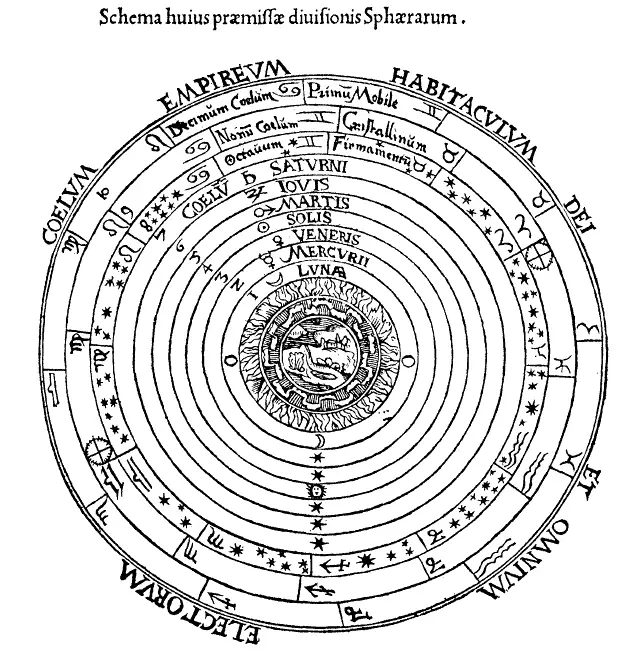
Well, if I talk about the classical elements of Aristotle model of the universe – aether does not exist. You know the obvious reason. I have explained it earlier. On the other hand, the other four classical elements can be compared to the modern chemical elements i.e earth is equivalent to solid. similarly, water to liquid, air to gas, and, fire to plasma.
Pythagorean Universe (4th Century BC)
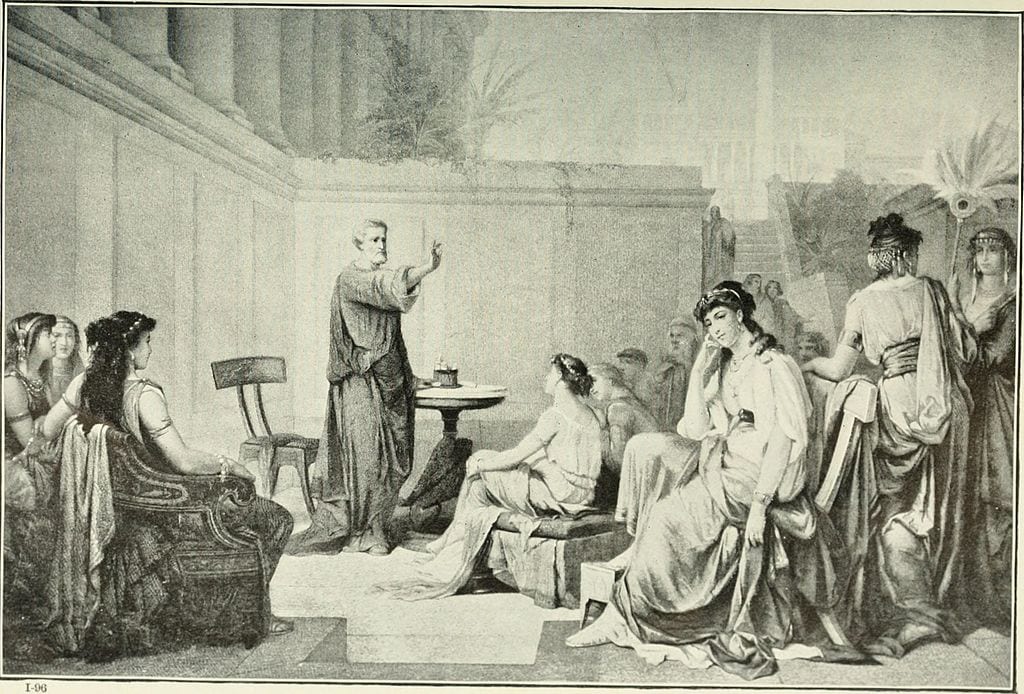
The next one in the list of my top 6 obsolete cosmological theories of the universe is the Pythagorean universe – which is also regarded as the most bizarre cosmological model of the universe ever made. I will tell you why, but before that, let me tell you one thing. Just because this model of the universe bears the name of Pythagoras doesn’t mean that it was developed by Pythagoras himself. In fact, this Pythagorean cosmology was developed by the prominent follower of Pythagoras school of philosophy i.e Philolaus.
Well, if I talk about the historical facts related to the cosmological theories of the universe, the Pythagorean model of the universe is regarded as the first known non-geocentric model of the universe.
But unlike the Copernican model, where the sun is placed at its center, in Pythagorean cosmology; an unseen central fire was placed at the center of the universe. Around which earth, counter earth, moon, sun, planets revolved in a circular motion.
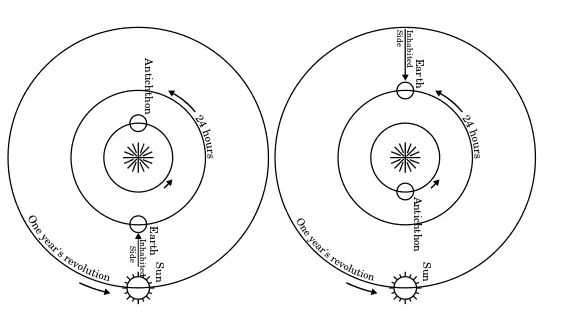
Philolaus argued that the central fire and counter earth could not be seen from the earth (or at least from the hemisphere where Greece is located) because as the earth rotates around the central fire; one side is always facing the fire and the other one facing away. Therefore he preassumed that he was living on the other side of the hemisphere which will never see the central fire as well as counter earth.
Atomist Universe (5th Century BC)
The next one in the line of my top 6 obsolete cosmological theories of the universe is the Atomist universe. Well to be frankly speaking, who discovered the atomist model of the universe is still a dispute to be solved. Historians suggest that the concept of atoms appeared in both ancient greeks and ancient Indian civilizations.
If I talk about the ancient greeks or pre Socratic philosophers – the credit for the discovery of the atomist universe is disputed between Leucippus, Democritus, and, Epicurus. You know there is a catch. I mean, all three of them are directly related to each other. I will tell you how…!!!
Leucippus was the mentor or master of the Democritus. On the other hand, Democritus was the master or teacher of Epicurus. The most mind-boggling fact is that they were not even contemporaries of each other. So why on earth there could be a dispute among them…!!! I think I should leave the dispute behind and talk about the base work and working principle behind the atomist model of the universe.
In order to theorize their atomic model of the universe, ancient greek philosophers divided the whole universe into two fundamental entities i.e ATOM and VOID. They argued that it is impossible to keep dividing matter for infinity. Therefore matter must be made of extremely tiny particles. Hence named atom surrounded by an infinite void or vacuum.
Though atoms are impossible to further bisect. But it can take a variety of shapes, arrangements, and, sizes to form a macroscopical material like you, your smartphone or even mount Everest.
Vedic Cosmology (Unknown)
Last but not least in my list of the top 6 obsolete cosmological theories of the universe is the Hindu model of the universe i.e Vedic cosmology. Well, if you will ask my personal opinion, Vedic cosmology is not at all the obsolete cosmological model of the universe. Yes, for the rest of the world (excluding Hindus and Buddhists and Jain and somehow Sikhs too); Vedic cosmology comes in the list of obsolete cosmological theories of the universe.
The exact date of its development is unknown. But it is by far the oldest cosmological model of the universe. Well, I mean why not. The book in which Vedic cosmology is written (RIGVEDA) is itself the oldest book ever written available on planet earth.
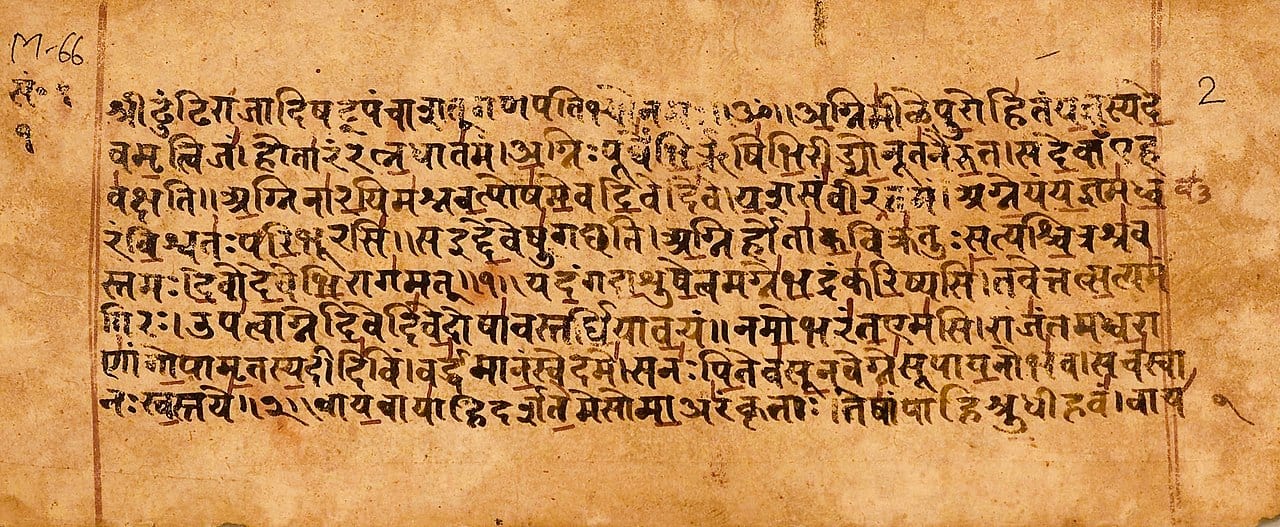
As per Vedic cosmology, it states that time has neither start nor endpoint. Only time will exist forever, rest will come and go. On the other hand, the universe is an endless cycle of creation and destruction. In fact, there are an infinite number of universes that are simultaneously created, destroyed, and, again reborn again. According to the Vedic cosmological timeline; currently, we are living in Kali Yuga. I will explain each and every term in a very precise manner.
MahaYuga
In order to simplify things, I will explain the Vedic cosmology in the human perception of years on earth. A Maha Yuga or GREAT YUGA is a period of 4.32 million years of earth. On the other hand, a Maha Yuga can be subdivided into 4 sub yugas i.e Satya Yuga (1st Yuga), Treta Yuga (2nd Yuga), Dvapara Yuga (3rd Yuga), and, Kali Yuga (4th Yuga – in which we are residing).
In order to sort out things, just think in terms of 4:3:2:1 ratio; such that
- Satya Yuga = 4 × 432,000 = 1,728,000 years
- Treta Yuga = 3 × 432,000 = 1,296,000 years
- Dwapara Yuga = 2 × 432,000 = 864,000 years
- Kali Yuga = 1 × 432,000 = 432,000 years
Manvantara
In Vedic cosmology, the next larger unit of time after Maha Yuga is Manvantara. The sacred scriptures of Rigveda state that a single Manvantara consists of 71 Maha Yugas. Well, if you do some simple math, you can easily calculate the age of one Manvantara i.e equal to 306.72 million of earth years.
After the competition of one Manvantara, there will be a resting period of time i.e Sandhi Kala – which is exactly equal to the duration of Satya Yuga i.e 1,728,000 earth years.
Kalpa – A Day Of Brahma
The next in line of the larger unit of time is Kalpa. A period of Kalpa is equivalent to 14 Manvantara and their respective Sandhi Kala that is exactly equal to be 4.32 Billion earth years. One Kalpa also happens to be a day of Brahma. As per sacred Vedic scriptures, Lord Brahma is the god of the whole creation. That’s why in the Hindi language, the Hindi name of the universe is BRAHMAND. Or simply in the words of George Lemaitre – COSMIC EGG.
Well, the timeline of Vedic cosmology is so vast that I have to write another article simply just Vedic cosmology. Because after Kalpa comes the Maha Kalpa, then Svetha Varaha Kalpa, and finally the current age of the universe.
So just to summarise all, currently, we are in the 1st day of Brahma of its 51st year. And with respect to that, we are living in the kali yuga of 28th Maha yuga of the 7th Manvantara.
Summary Of The Whole Article
At the very last leg of this Top 6 obsolete cosmological theories of the universe article, I can summarise that any cosmological model of the universe; whether the big bang theory of the universe, or parallel universe, or even any of the obsolete cosmological theories about the universe comes under the direct guidelines of the Vedic cosmology.
Meaning, Vedic cosmology talks about the continuous big band, big crunch, or even the existence of the parallel universe, or any other cosmological theories in an exact and precise way.
You won’t believe but Aryabhata even calculated the exact year we are living in Kali Yuga. He calculated that in 499 AD we were in 3600 years of kali yuga. So, I have an open question for you. Can you do some simple math and calculate that in 2020, what is the exact year of Kali-yuga we are living??
That’s it for this post. If you like this article, share it if you like it, like it if you share it. You can also find us on Mix, Twitter, Pinterest, and Facebook.

Hello Atul, l am pleasantly surprised. The sources that l have read on Aryabhata state that he assigned the Earth to be the ECCENTRIC CENTER to the orbiting planets and the Sun to be the RADIAL CENTER. Pythagorus was studying with the priests in Egypt when ancient Iran invaded and conquered. Pythagorus studied in ancient lran for a decade and returned to Greece with Zoroasterism cosmology. The UNSEEN GREAT FIRE was invisible to mortal eyes. If the Lambda-CDM is true, then each galaxy becomes the center of its observable universe. Blessings.